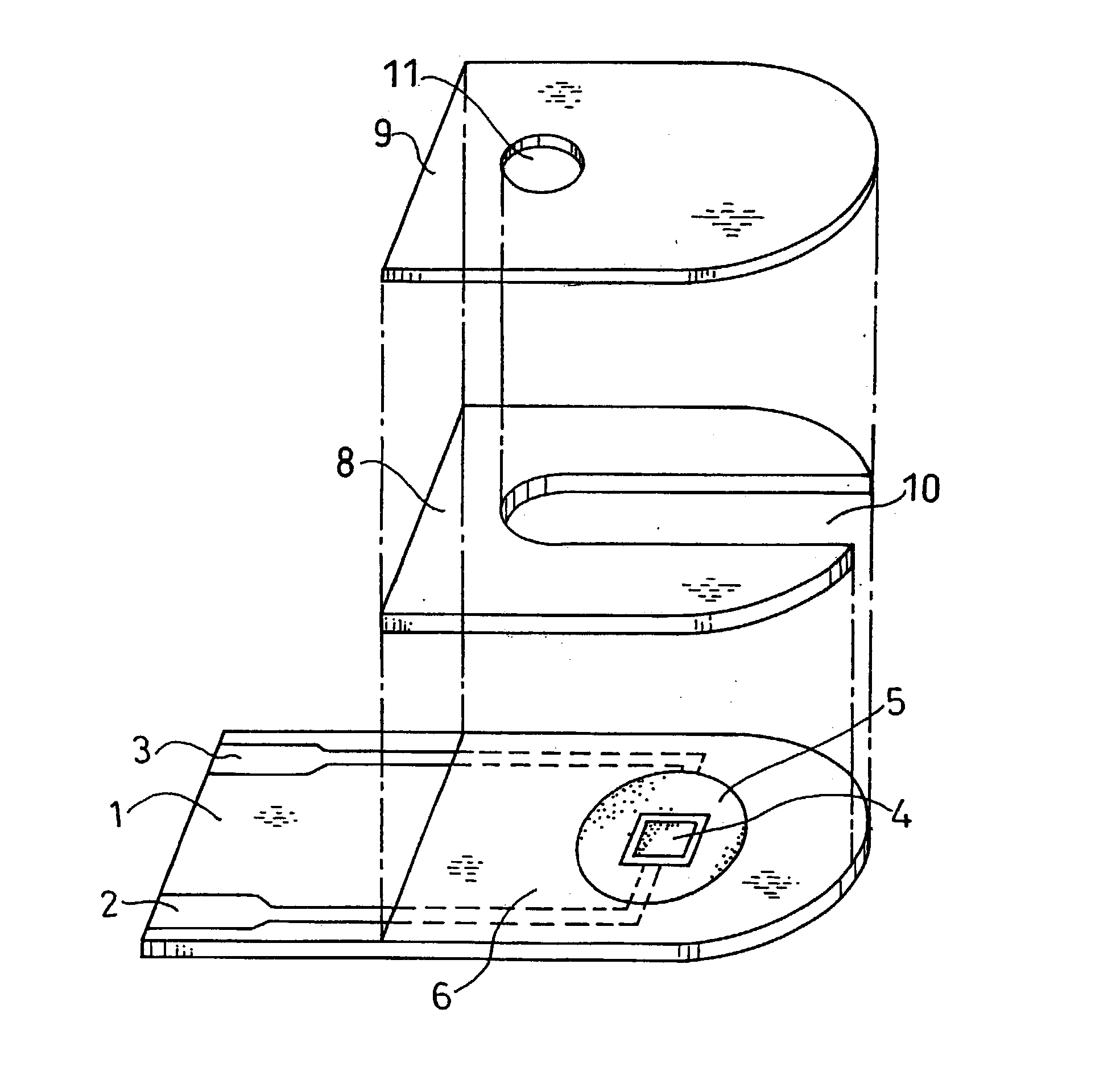Biosensor
a biosensor and sensor technology, applied in the field of biosensors, can solve the problems of inability to measure, decrease in the magnitude of the response current to glucose, and inability to respond to glucose, so as to avoid the influence of organic solvent on enzyme activity and prevent the evolution of air bubbles in the sample solution supply pathway
- Summary
- Abstract
- Description
- Claims
- Application Information
AI Technical Summary
Benefits of technology
Problems solved by technology
Method used
Image
Examples
example 2
[0040] FIG. 4 is a longitudinal sectional view of a biosensor in this example. The difference from Example 1 is that PQQ dependent glucose dehydrogenase, which is an oxidoreductase that catalyzes the oxidation reaction of glucose, is carried by the sensor separately from gluconolactonase.
[0041] On a base plate 1 on which an electrode system was formed, a CMC layer 7a was formed by dropping a 0.5 wt % aqueous solution of CMC, which is a hydrophilic polymer, in an amount of 5 .mu.l and drying it. Next, gluconolactonase originated from Aspergillus niger was dissolved in a 1 mM potassium hydrogenphthalate buffer solution (pH6), which is a buffer. 4 .mu.l of the solution was dropped on the CMC layer 7a and was dried to form a gluconolactonase layer 12. Therein, the area of the gluconolactonase layer 12 is 12 mm.sup.2, and the amount of potassium hydrogenphthalate buffer carried is 0.33 nmol / mm.sup.2. Then, with the aim of separation from the gluconolactonase layer 12, a layer 13 of polyv...
PUM
| Property | Measurement | Unit |
|---|---|---|
| Acidity | aaaaa | aaaaa |
| Responsivity | aaaaa | aaaaa |
| Hydrophilicity | aaaaa | aaaaa |
Abstract
Description
Claims
Application Information
 Login to View More
Login to View More - R&D
- Intellectual Property
- Life Sciences
- Materials
- Tech Scout
- Unparalleled Data Quality
- Higher Quality Content
- 60% Fewer Hallucinations
Browse by: Latest US Patents, China's latest patents, Technical Efficacy Thesaurus, Application Domain, Technology Topic, Popular Technical Reports.
© 2025 PatSnap. All rights reserved.Legal|Privacy policy|Modern Slavery Act Transparency Statement|Sitemap|About US| Contact US: help@patsnap.com



